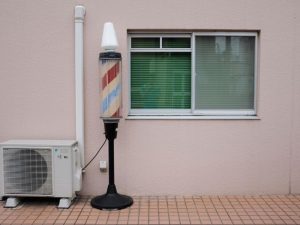As the summer months approach, ensuring your air conditioner is in peak condition is essential for maintaining a comfortable and cool indoor environment. Regular maintenance not only enhances the efficiency of your air conditioning unit but also extends its lifespan and prevents costly repairs. This comprehensive guide will provide you with essential maintenance tips to prepare your air conditioner for the summer heat.
Why Air Conditioner Maintenance Is Important
1. Improved Efficiency
Regular maintenance ensures that your air conditioner runs efficiently, reducing energy consumption and lowering utility bills. A well-maintained unit can operate at its optimal performance, cooling your home more effectively.
2. Extended Lifespan
Routine maintenance can significantly extend the lifespan of your air conditioning unit. By addressing minor issues before they become major problems, you can avoid premature breakdowns and costly replacements.
3. Enhanced Indoor Air Quality
A clean air conditioner helps maintain better indoor air quality by reducing dust, allergens, and pollutants circulating through your home. Regular maintenance ensures that filters and coils are clean, preventing the buildup of harmful particles.
4. Preventive Maintenance
Scheduled maintenance allows you to identify and address potential issues before they escalate into significant problems. Preventive measures can save you from inconvenient breakdowns during the hottest days of summer.
Essential Air Conditioner Maintenance Tips
To keep your air conditioner running at its best, it is important to have a maintenance plan. Fortunately, our pals at G&S Mechanical have provided us with some essential tips for your air conditioner’s best performance.
1. Clean or Replace Air Filters
Air filters play a crucial role in maintaining indoor air quality and the efficiency of your air conditioner. Dirty or clogged filters can restrict airflow, causing the unit to work harder and consume more energy.
Steps to Clean or Replace Air Filters:
- Turn Off the Unit: Ensure the air conditioner is turned off before removing the filter.
- Locate the Filter: Find the filter compartment, usually located near the return air duct or the air handler.
- Remove the Filter: Carefully remove the filter from its housing.
- Clean or Replace: If the filter is reusable, clean it with a vacuum or wash it with water and let it dry completely before reinserting. If it’s disposable, replace it with a new one.
- Reinstall the Filter: Place the clean or new filter back into its housing.
2. Clean the Condenser Coils
The condenser coils are located in the outdoor unit of your air conditioner. Over time, they can accumulate dirt, dust, and debris, reducing the unit’s efficiency.
Steps to Clean Condenser Coils:
- Turn Off the Power: Turn off the power to the air conditioner at the thermostat and the breaker box.
- Remove Debris: Clear away any leaves, grass, or debris around the outdoor unit.
- Access the Coils: Remove the protective grille or casing to access the coils.
- Clean the Coils: Use a soft brush or a coil cleaner to gently clean the coils. Avoid using high-pressure water, which can damage the fins.
- Reassemble the Unit: Replace the grille or casing and turn the power back on.
3. Check the Refrigerant Levels
Proper refrigerant levels are essential for the efficient operation of your air conditioner. Low refrigerant can indicate a leak, which needs to be addressed by a professional technician.
Steps to Check Refrigerant Levels:
- Turn Off the Unit: Ensure the air conditioner is turned off.
- Inspect for Leaks: Look for signs of refrigerant leaks, such as oily residue or frost on the coils.
- Call a Professional: If you suspect a refrigerant leak or low levels, contact a licensed HVAC technician to inspect and recharge the system.
4. Inspect and Clean the Evaporator Coils
The evaporator coils are located in the indoor unit and are responsible for absorbing heat from the air inside your home. Dirty coils can reduce efficiency and cause the unit to freeze up.
Steps to Clean Evaporator Coils:
- Turn Off the Power: Turn off the power to the air conditioner.
- Access the Coils: Remove the access panel to reach the evaporator coils.
- Clean the Coils: Use a soft brush or a no-rinse coil cleaner to clean the coils. Be gentle to avoid damaging the fins.
- Reassemble the Unit: Replace the access panel and turn the power back on.
5. Clear the Condensate Drain
The condensate drain removes moisture collected from the air by your air conditioner. A clogged drain can cause water damage and increase humidity levels in your home.
Steps to Clear the Condensate Drain:
- Turn Off the Power: Ensure the air conditioner is turned off.
- Locate the Drain Line: Find the condensate drain line, usually near the indoor unit.
- Check for Blockages: Use a wet/dry vacuum or a plumber’s snake to clear any blockages in the drain line.
- Flush the Line: Pour a mixture of water and vinegar down the drain to remove algae and mold buildup.
6. Check the Thermostat Settings
Ensure your thermostat is set to the correct temperature and mode. Consider upgrading to a programmable or smart thermostat for better control and energy savings.
Steps to Check Thermostat Settings:
- Set the Temperature: Set the thermostat to a comfortable temperature, usually between 72-78°F (22-26°C).
- Check the Mode: Ensure the thermostat is set to “cool” mode.
- Test the Thermostat: Monitor the thermostat to ensure it accurately controls the air conditioner.
7. Inspect the Ductwork
Leaky or damaged ductwork can reduce the efficiency of your air conditioner and increase energy consumption. Inspect the ductwork for any visible signs of damage and ensure all connections are secure.
Steps to Inspect Ductwork:
- Visual Inspection: Look for visible cracks, holes, or disconnected sections in the ductwork.
- Seal Leaks: Use duct tape or mastic sealant to seal any visible leaks.
- Insulate Ducts: Ensure that the ductwork in unconditioned spaces is properly insulated to prevent energy loss.
8. Schedule Professional Maintenance
While many maintenance tasks can be performed by homeowners, it’s essential to schedule professional maintenance at least once a year. A licensed HVAC technician can perform a thorough inspection, identify potential issues, and ensure your air conditioner operates efficiently.
Benefits of Professional Maintenance:
- Comprehensive Inspection: Professionals can detect and address issues that may not be visible to the untrained eye.
- Expert Repairs: Technicians can perform necessary repairs and adjustments to keep your unit running smoothly.
- Efficiency Testing: Professionals can test the efficiency of your system and make recommendations for improvements.
Conclusion
Preparing your air conditioner for the summer months is crucial for maintaining a comfortable indoor environment and avoiding unexpected breakdowns. By following these maintenance tips, you can enhance the efficiency, lifespan, and performance of your air conditioning unit. Regular maintenance not only ensures a cool and comfortable home but also saves energy and reduces utility costs. Don’t wait until the heatwave hits – start preparing your air conditioner now to enjoy a worry-free and comfortable summer season.




